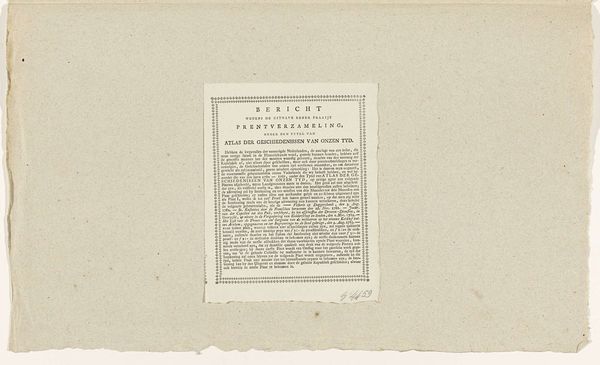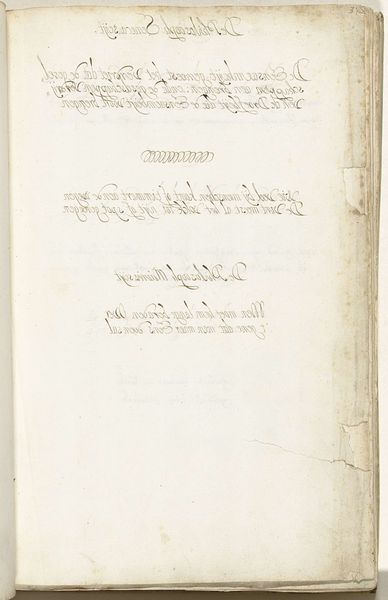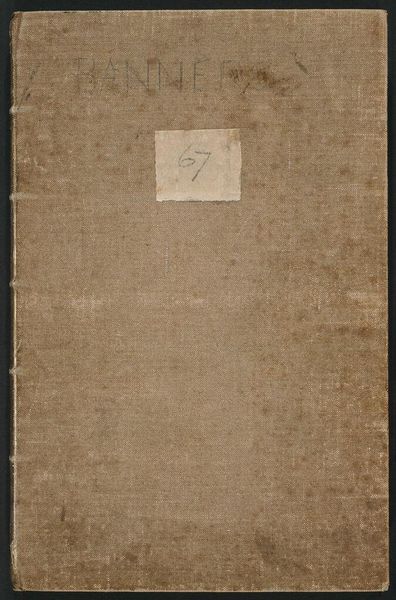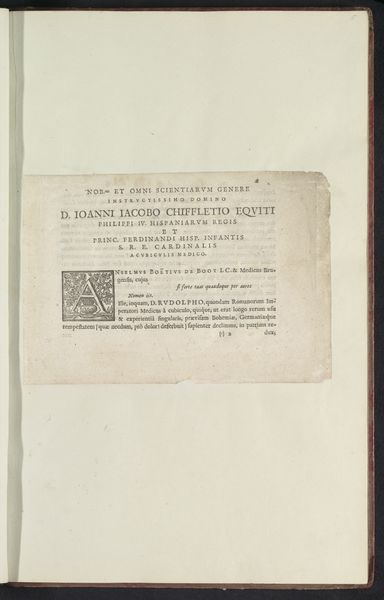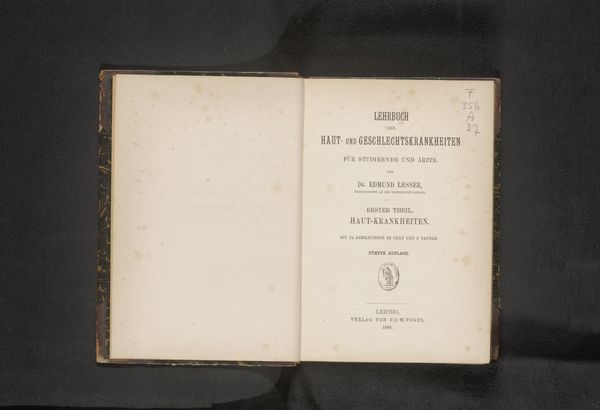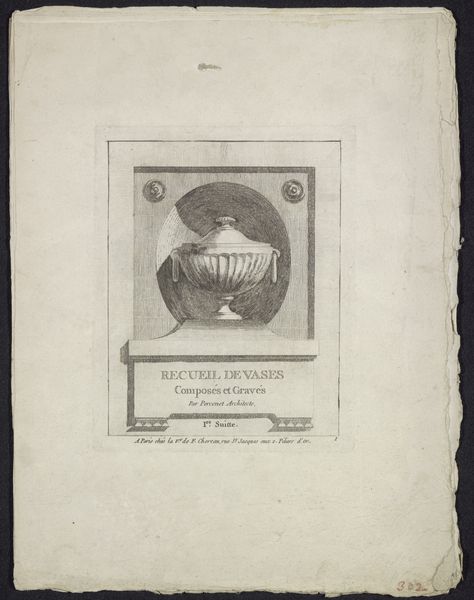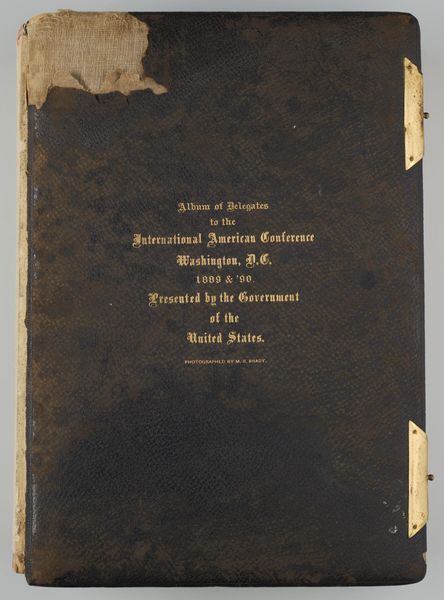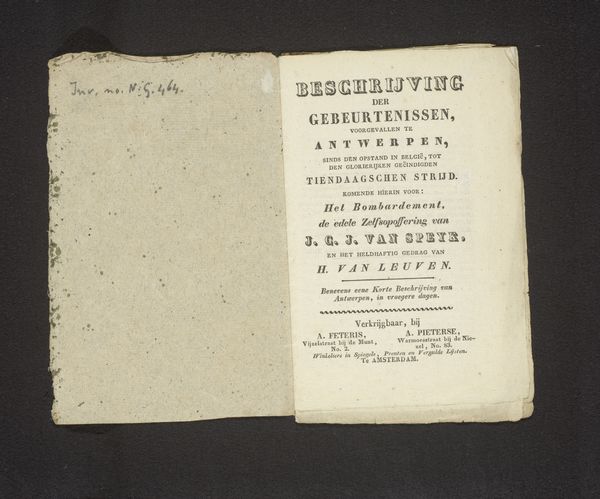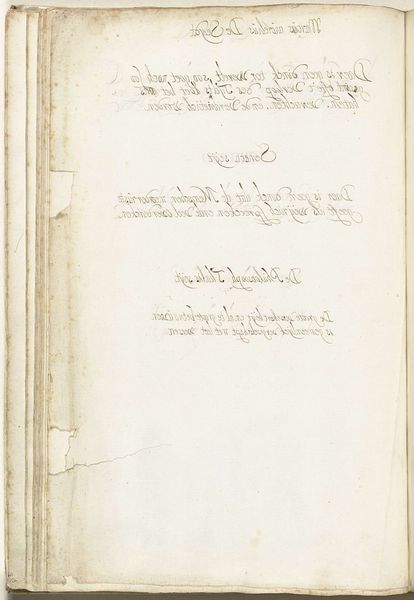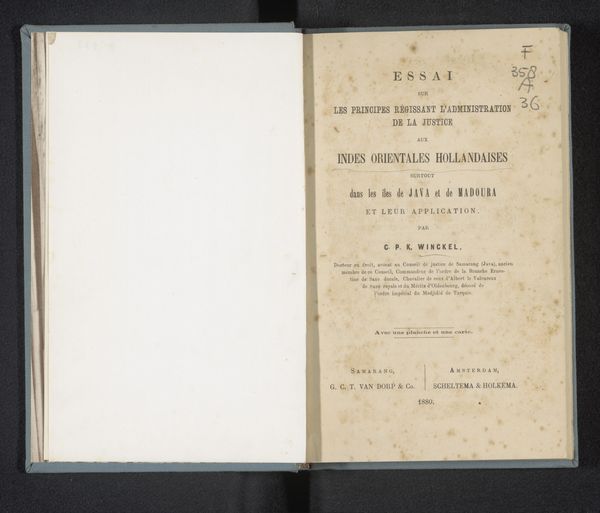
drawing, print, etching, paper, engraving, architecture
#
drawing
# print
#
etching
#
landscape
#
paper
#
romanticism
#
engraving
#
architecture
Dimensions: height 316 mm, width 502 mm, thickness 5 mm, width 958 mm
Copyright: Rijks Museum: Open Domain
Editor: Here we have "Album met zes voorstellingen van gebouwen in Chester," or "Album with six views of buildings in Chester," created between 1811 and 1814 by George Cuitt the Younger. It combines drawing, printmaking, etching and engraving, all on paper. It has a kind of historical, documentary feel to it. What strikes you about it? Curator: For me, it’s the explicit link between architectural representation and the mechanics of its reproduction and distribution. Cuitt doesn’t just depict buildings, he actively markets his *Six Etchings*, offering a product directly to subscribers at one price, and non-subscribers at another, almost like a factory assembly line approach applied to art making. Notice the list of sellers. Why do you think Cuitt made prints, rather than, say, paintings? Editor: Well, maybe he wanted to make his work accessible to a broader audience? Etchings are more easily reproduced, right? Curator: Precisely! The relatively low cost of materials and the ease of reproduction would certainly allow Cuitt to target a burgeoning middle class eager to acquire views of picturesque architecture. The act of subscription itself also fosters a sense of community and shared cultural capital, tying these consumers to Cuitt and his chosen subject. Where was Cuitt based? Editor: The print mentions Chester and London as places to buy the etchings. Curator: Yes, so think about the socio-economic factors: growing urban centers, a rising middle class, and advancements in printing technology – all converging to shape not only what art is made, but how it's made, distributed, and consumed. It’s all about the relationship between artist, object, and market forces, blurring lines between artist as craftsman and artist as producer. Editor: So, it is as much about the buildings *represented* as about how the *representation* was produced, consumed and sold. I see! Curator: Absolutely. Considering Cuitt's method opens a window into the economic engine driving artistic creation in the 19th century.
Comments
No comments
Be the first to comment and join the conversation on the ultimate creative platform.
